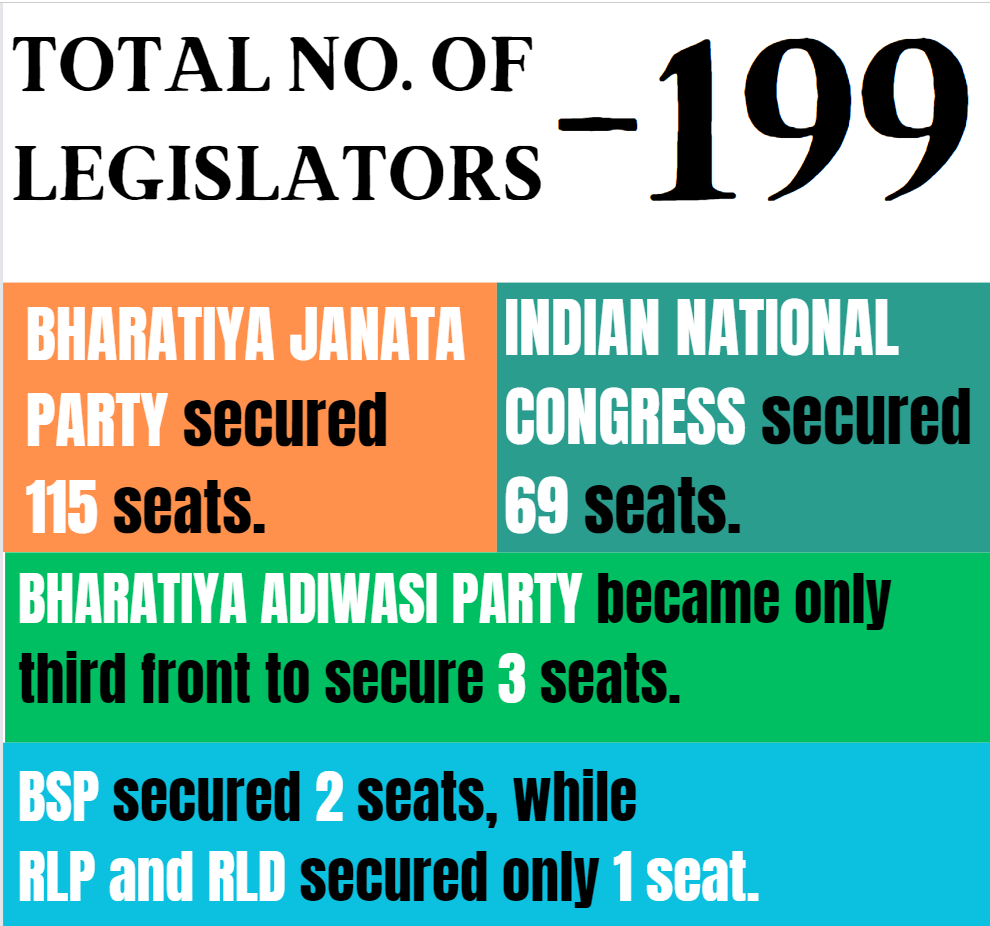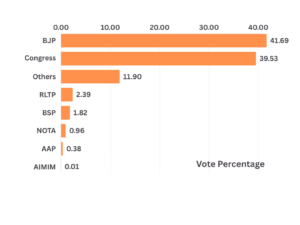
In the state assembly elections this year, the third front became a focal point of political upheaval. Initial speculations suggested that the third front could wield substantial influence in government formation. However, post the election results, it appears that the third front is not poised to play a prominent role, and the people of Rajasthan still stick to the Bharatiya Janata Party (BJP) and Congress.

How the third front performed this time
In this election cycle, various political fronts, including AAP, BSP, RLTP (or RLP), ASP, BTP, BAP, and CPI, among others, contested to influence the outcome of 200 assembly seats. However, none of them achieved success in the Rajasthan Assembly elections, with the Bharatiya Adiwasi Party winning only 3 seats, BSP on 2, RLTP on 1, and RLD on 1 assembly seat. In the 2018 Assembly elections, Independents secured 9.5%, BSP obtained 4%, RLTP garnered 2.4%, and CPI (M) received 1.2%, while other parties collectively gained 2.5% of the votes. Notably, the vote percentage for the third front witnessed a significant decline this time, with the NOTA percentage decreasing from 1.3% to 0.96%.
The party formed three months ago showed its strength
Bharatiya Adiwasi Party (BAP) was formed just three months before the assembly elections and emerged as the largest third party in the elections. BAP left AAP, RLP and BSP behind by winning a maximum of three seats. BAP Party President Rajkumar Raut registered the biggest victory by 70 thousand votes.
RLP lost three seats
The Rashtriya Loktantrik Party (RLP), aiming to be a game-changer this time, had fielded candidates on 81 seats. While Bhim Sena’s Chandra Shekhar Azad’s party, Azad Samaj Party, had also formed an alliance with Hanuman Beniwal’s RLP to secure ST, SC vote bank, their claim turned out to be the opposite. In the previous elections, out of 57 candidates of RLP, four had won.
However, this time, their sole candidate was able to win. The victory belonged to RLP chief Hanuman Beniwal. The election results were so bad for the party that Beniwal himself managed to win the Khinvsar assembly seat with only 2,059 votes.
A disappointing result for the Bahujan Samaj Party
In the previous legislative assembly elections, the Bahujan Samaj Party (BSP) had won 6 seats. This time the party had fielded 155 candidates, but it could only win two seats. Apart from these two seats, BSP candidates could not secure a position on any other seat.
Rashtriya Lok Dal fought on one seat and won
In the Rajasthan Legislative Assembly elections this time, the Rashtriya Lok Dal (RLD) contested from only one seat, Bharatpur, which Congress left for RLD in the alliance. RLD won from here.
BSP and RLTP affected the Congress’s game
During this election, BSP secured 1.82% of the votes, while RLTP received 2.39%, resulting in a combined total of 4.21%. In contrast, the Congress received 2.16% fewer votes than the BJP. This indicates that the voting percentages of RLTP and BSP have disrupted the electoral calculations for the Congress party.
In the grand spectacle of Rajasthan’s state assembly elections, the much-anticipated third front failed to set the political stage ablaze. Despite early predictions hinting at its potential to sway the government’s formation, the third front found itself on the sidelines after the election results. Various political entities, including AAP, BSP, RLTP, ASP, BTP, BAP, and CPI, ventured to influence the outcomes across 200 assembly seats. However, the result was a resounding silence, with only the Bharatiya Adiwasi Party able to secure three seats, which was the maximum of all third-front parties. While BSP secured two, RLTP and RLD claimed one assembly seat. This marks a stark contrast to the 2018 elections, where Independents and various front parties garnered a more substantial vote percentage. The overall impact of the third front on Congress’s electoral strategy becomes evident through the disrupted voting percentages.